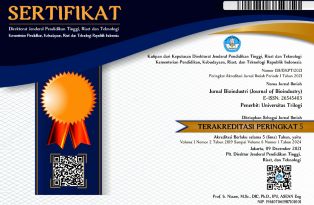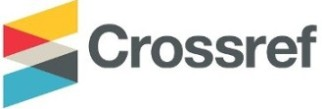ANALISIS ORGANOLEPTIK DAN KADAR SERAT NORI ANALOG DAUN KOLESOM (Talinum Triangulare (Jacq.) Willd)
Abstract
Nori is a food product from seaweed in the form of sheet. Seaweed is usually consumed as snacks or used as a coating material for sushi products. The purpose of this study was to determine the best formulation of nori analogue made from water leaf through hedonic test and analyze the fiber content in nori analogue. The reason of using water leaf as an analogue raw material is beacuse it contains flavonoid compounds, phenolic acids, and anthocyanins that have function as antioxidants. Making nori analogue is being done by utilizing water leaf and hydrocolloids in the form of corn starch, potato starch, or sago as thickener, which is then added by glycerin and lecithin. After the gelatine is formed, the dough of the edible film is dried. The two final formulation, namely F4 and F6, are picked out of nine formulations through the hedonic test. The composition of F4 is 85 g of water leaf components and 15 g of corn starch, meanwhile the composition of F6 is 85 g of water leaf components and 15 g of sago. Water leaf plays a big role in donating dietary fiber content to nori analogue. Total fiber content from nori analogue for formulation F4 was 7.05% and F6 was 7.99%, meanwhile the highest crude fiber content was obtained from formulation F4 by 3.26% and F6 by 3.11%.
Keywords: food fiber, gelatinization, hedonic test, hydrocolloid
Keywords
Full Text:
PDFDOI: https://doi.org/10.31326/jbio.v2i1.494
DOI (PDF): https://doi.org/10.31326/jbio.v2i1.494.g297
Refbacks
- There are currently no refbacks.
Editorial Office:
Fakultas Bioindustri
Universitas Trilogi
Jl. TMP Kalibata No.1
Jakarta 12760
Copyright Notice:


2.png)






2.png)







